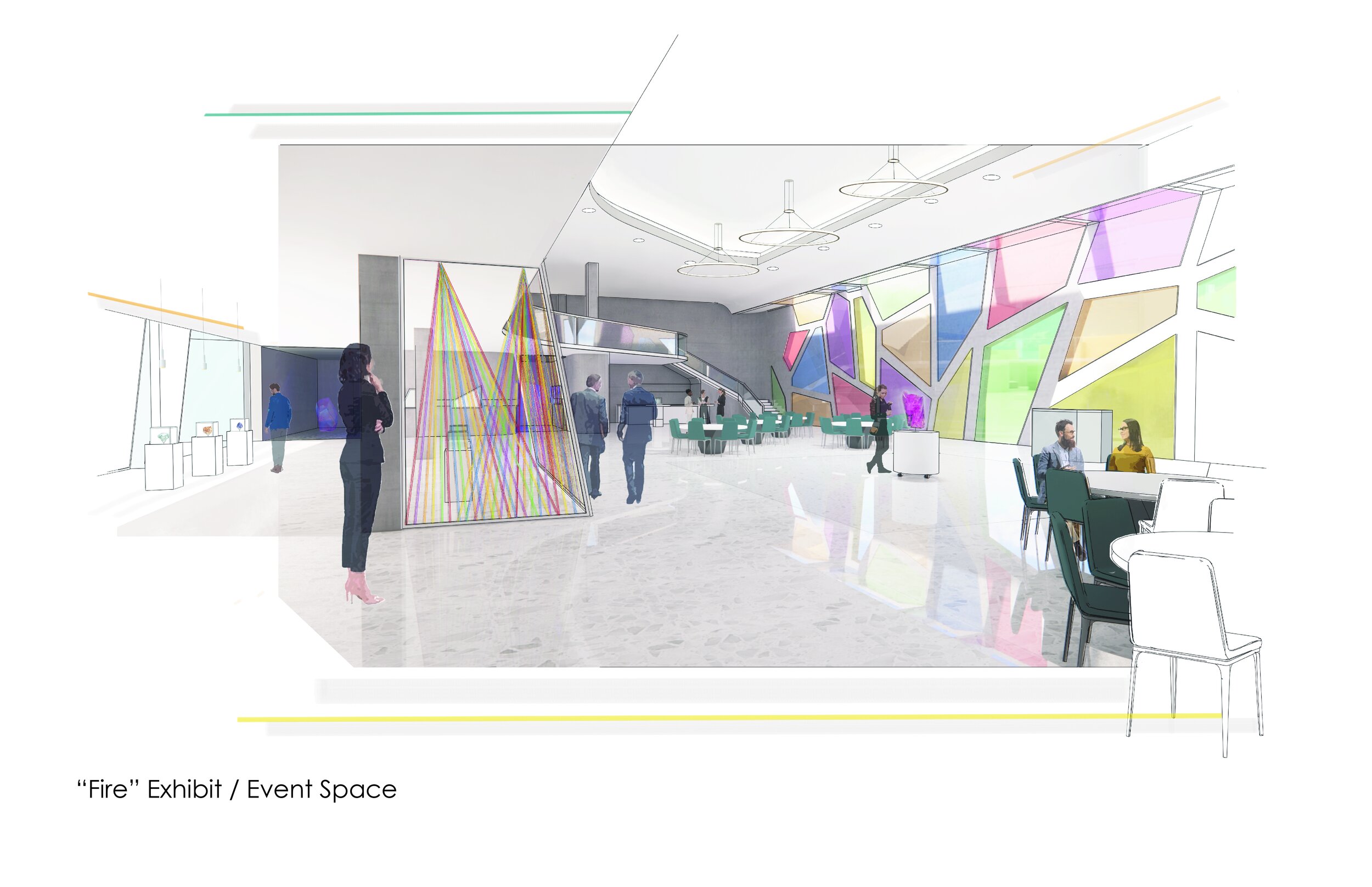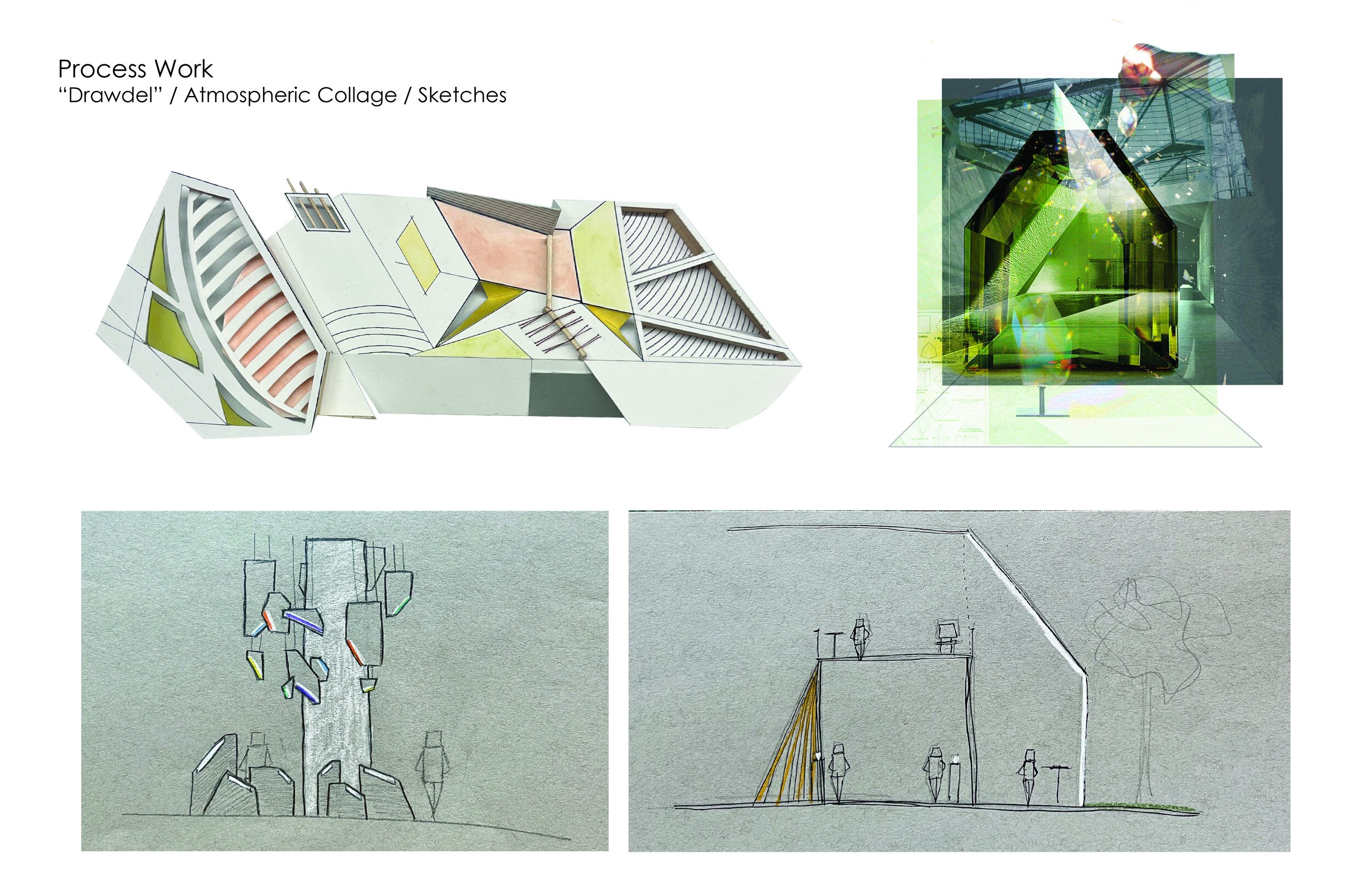Professor Jill Lahrmer
With over 100 years of discovery, The Cleveland Museum of Natural History has a mission “to inspire, through science and education, a passion for nature, the protection of natural diversity, the fostering of health, and leadership to a sustainable future.” Cultivating curiosity is a core value of the museum thus allowing the interior environment and exhibits to entice visitors to learn and explore by making science relatable. Renovating the museum to further enhance these motives has been many years in the making. For this studio project, students were tasked with providing their creative vision on reimagining the Kirtland/Dino Hall as a high-end event space, highlighted by curating intertwined exhibit areas. This studio had the opportunity to visit the site and special attention was taken to observe the light, color, texture, smell, noise, form, space, space-form relationships throughout the new renovation and current exhibits. This project encompassed design research to understand museum culture and event spaces, diagramming & analysis of site, and a catalyst to conceptualize the project with studies on shadow and bone. Final deliverables resulted in programming and problem identification responding to the client’s needs, space planning, development of the 3D environment through sketching, orthographic drawings and perspectives.
Kelly Chylinski
Cleveland Museum of Natural History | Kirtland/Dino Hall
The Cleveland Museum of Natural History has been under renovation. Its new exhibits focus on learning and curiosity, and that is something I wanted to focus on when designing Kirtland Hall. Alongside curiosity, I also wanted to focus on flexibility because our prompt was to design an exhibit space that could also function as an event space. We were given a choice of what could be exhibited, and I chose cultural anthropology. We were also tasked to choose a secret program for the space, and my secret program is an art gallery which displays the work of minority artists. My design of Kirtland Hall utilizes screens, mobile walls, and mobile showcases to ensure maximum flexibility of graphics and space use. In addition, the two entrances into the hall ask questions about anthropology to inspire curiosity in visitors. If you enter from the courtyard, you’re met with the question, “where did we come from?” If you enter from the museum, you’re met with the question, “who were we?”
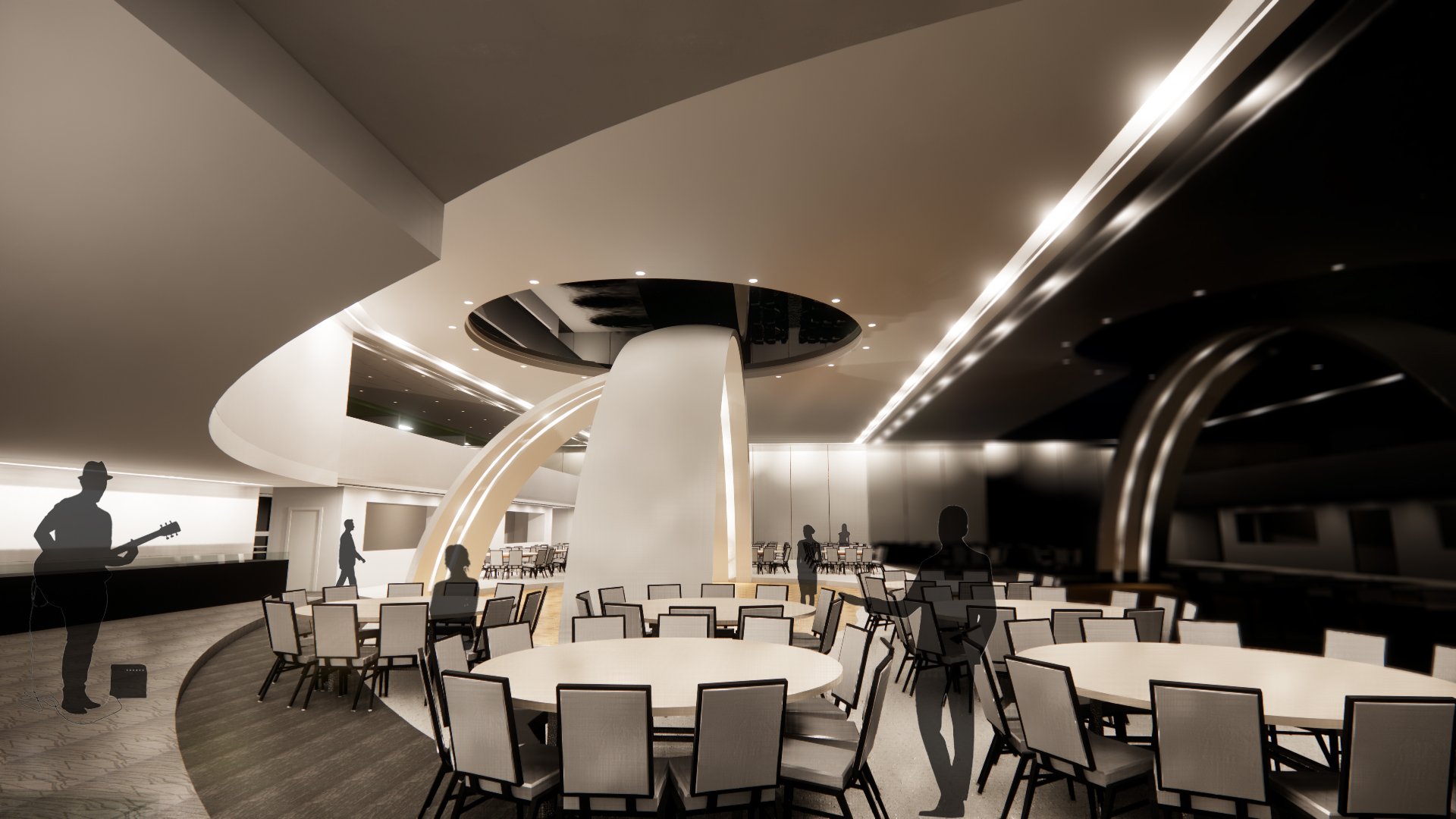






Carley Klaas
The Cleveland Museum of Natural History: Kirtland/Dino Hall
With over 100 years of discovery, The Cleveland Museum of Natural History has a mission “to inspire, through science and education, a passion for nature, the protection of natural diversity, the fostering of health, and leadership to a sustainable future.” Cultivating curiosity is a core value of the museum thus allowing the interior environment and exhibits to entice visitors to learn and explore by making science relatable. Renovating the museum to further enhance these motives has been many years in the making.




Olivia Cwynar
Cleveland Museum of Natural History-Kirtland Hall (Bug Exhibit and Event Space)
Basing the design and concept off of my "drawdel", showing the importance of shadow, bone, and skin specifically from the prehistoric Titanoboa snake, I was then able to build my design for the Cleveland Museum of Natural History, Kirtland Hall. In this space, we were to design an event space and exhibit space all in one. I chose to go with the bug exhibit option as it best fit with my final drawdel concept that I carried through in my final design. Making sure to showcase bugs and butterflies in different ways as well as creating a unique event space environment using connection points, transparency, and organic shapes was my main goal in this project.
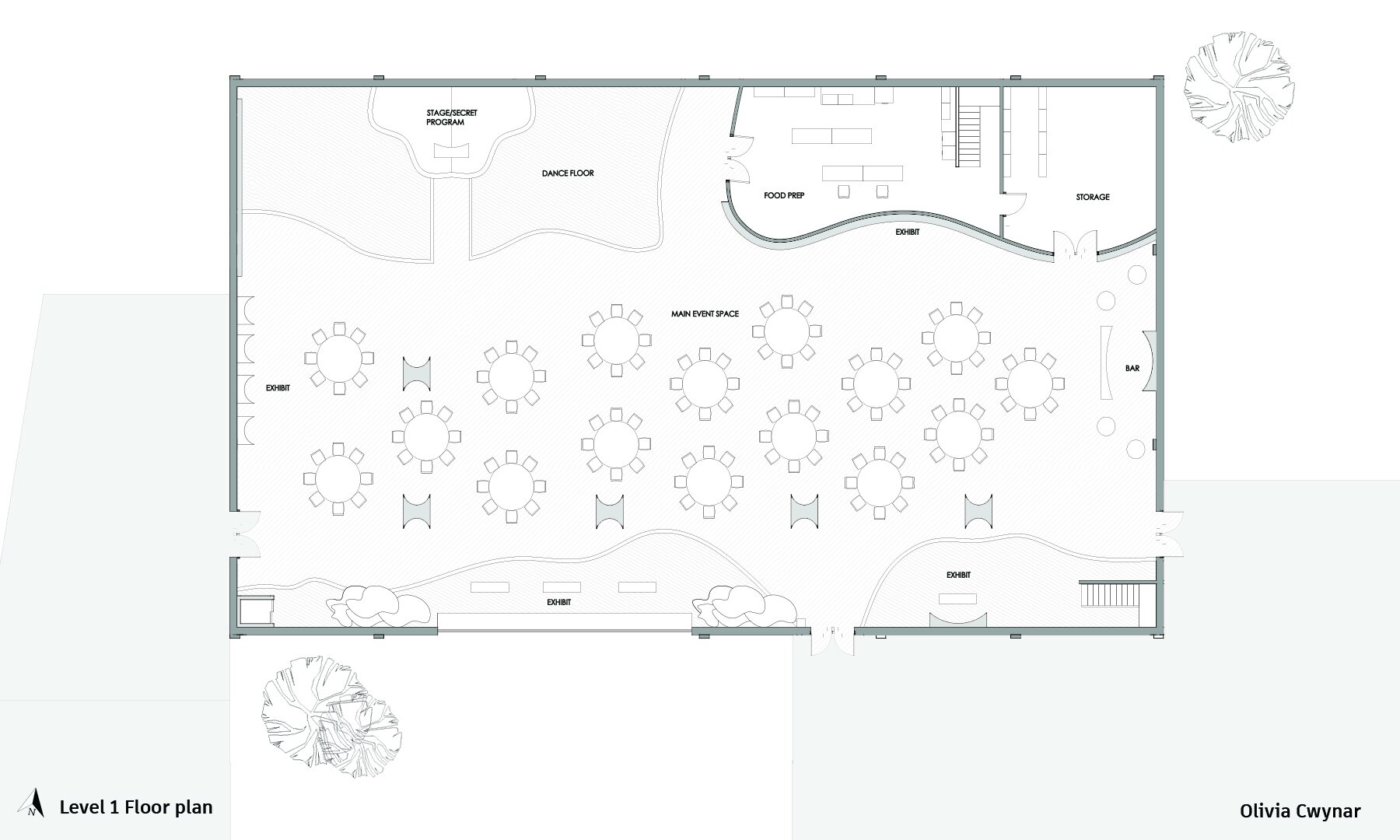





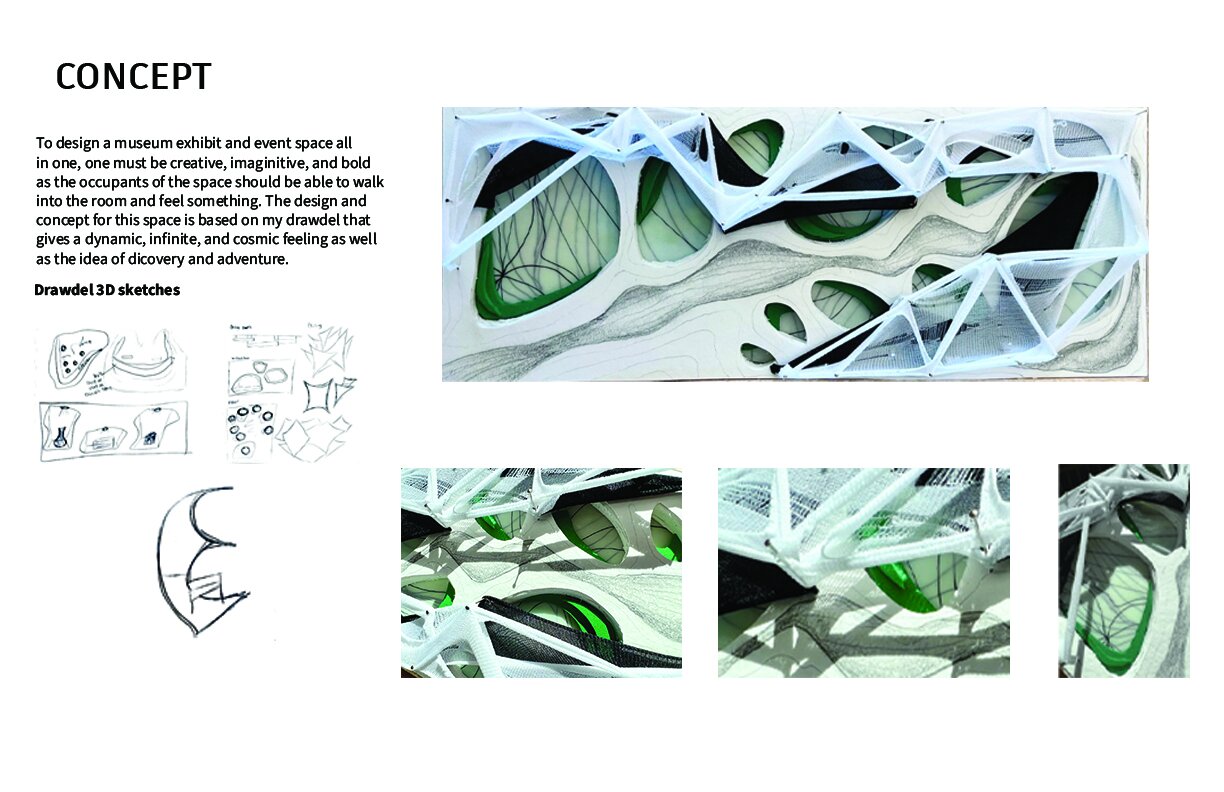
Professor Brandi Green
With over 100 years of discovery, The Cleveland Museum of Natural History has a mission “to inspire, through science and education, a passion for nature, the protection of natural diversity, the fostering of health, and leadership to a sustainable future.” Cultivating curiosity is a core value of the museum thus allowing the interior environment and exhibits to entice visitors to learn and explore by making science relatable. Renovating the museum to further enhance these motives has been many years in the making. For this studio project, students were tasked with providing their creative vision on reimagining the Kirtland/Dino Hall as a high-end event space, highlighted by curating intertwined exhibit areas. This studio had the opportunity to visit the site and special attention was taken to observe the light, color, texture, smell, noise, form, space, space-form relationships throughout the new renovation and current exhibits. This project encompassed design research to understand museum culture and event spaces, diagramming & analysis of site, and a catalyst to conceptualize the project with studies on shadow and bone. Final deliverables resulted in programming and problem identification responding to the client’s needs, space planning, development of the 3D environment through sketching, orthographic drawings and perspectives.
Philip Tucker
Cleveland Museum of Natural History Event Space
The objective of this space is to fulfill multiple purposes and fit a variety of moods through the use of light. It will have the ability to be a stunning interactive display as well as an elegant event space. This vision was achieved through a new special event entrance with a valet service, an interactive picnic area inspired by gemstones, and heavy use of advanced lighting technology throughout the space. This project takes a space that would typically be at risk of being predictable and creates a journey that enriches the overall experience while retaining the functionality needed for an event space.









Professor Ronn Daniel
With over 100 years of discovery, The Cleveland Museum of Natural History has a mission “to inspire, through science and education, a passion for nature, the protection of natural diversity, the fostering of health, and leadership to a sustainable future.” Cultivating curiosity is a core value of the museum thus allowing the interior environment and exhibits to entice visitors to learn and explore by making science relatable. Renovating the museum to further enhance these motives has been many years in the making. The Cleveland Museum of Natural History (CMNH) is seeking your creative vision on reimagining Kirtland (Dino) Hall as a high-end event space, highlighted by an exhibit area for minerals & gems, butterflies & bugs, or cultural anthropology.
Celia Chamberlain
Beetles, Bugs, and Butterflies
Kirtland Hall’s BEETLES, BUGS, AND BUTTERFLIES exhibition and event space will pique interest and sooth fears about entomology to bring about a new wave of love for these creatures, while providing an immersive experience to guests by incorporating education, innovation, and interaction. The inclusion of many different types of space in this design will create an area that has something for everyone. A combination of tactile and visual interactive exhibits allow for a wide range of immersive learning. Many exhibits transform into tables when an event occurs, effectively combining the two experiences into one.



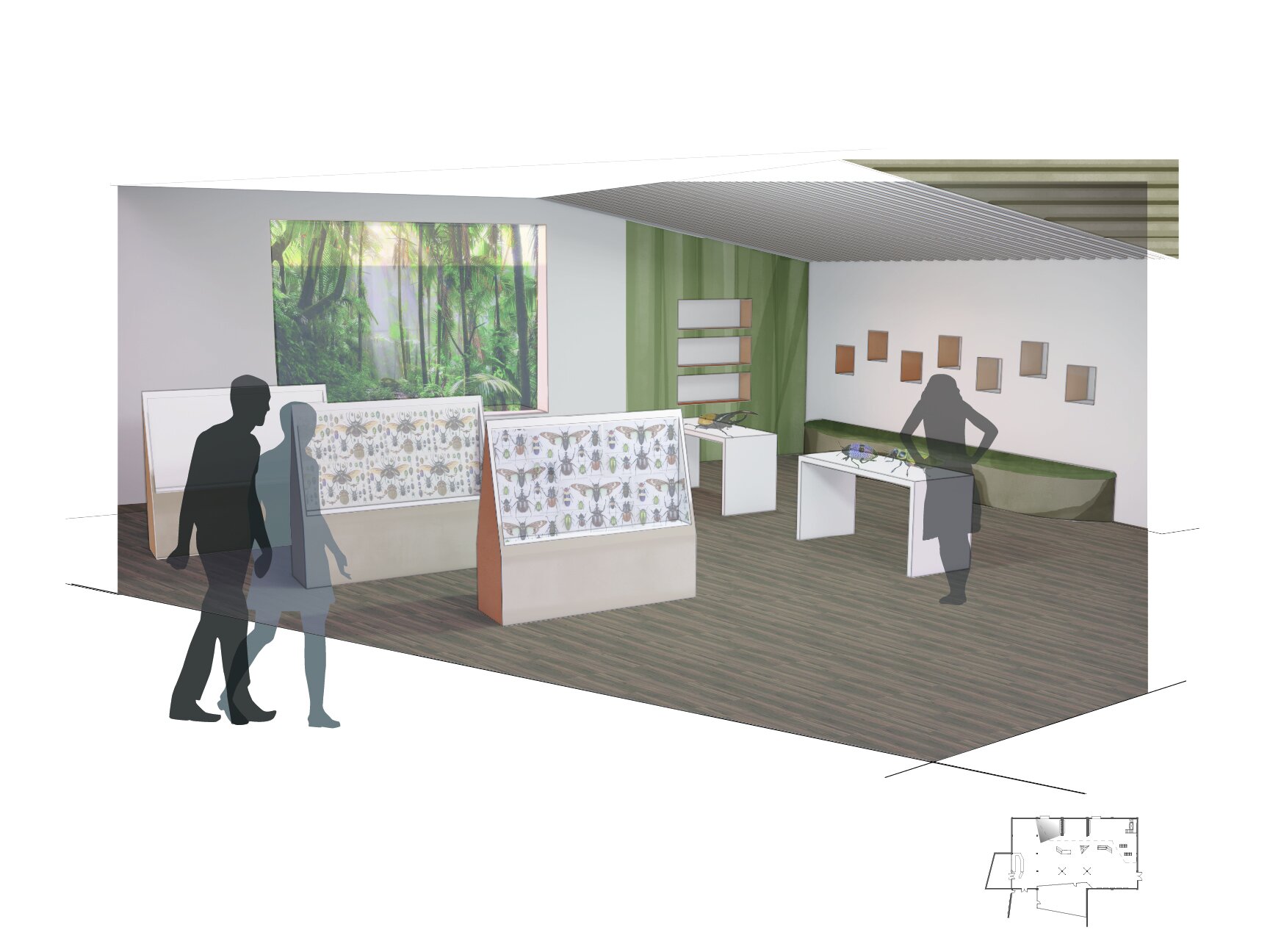


Brooke Schiele
The Cleveland Museum of Natural History / Kirtland / Dino Hall
The Objective of this project was to design an interior space within the Cleveland Museum of Natural History that can function as an event space or exhibit space depending on the occasion. While Utilizing the Knowledge I have gained from past projects, the intent of this design was to create a space that enhances the shape and light reflections inspired by gems. To achieve this goal I incorporated many elements into my design that can showcase the gems by using dark tones and minimal color so the exhibits will stand out.







Endiah Johnson
Cleveland Museum of Natural History - Cultural Anthropology Exhibit
A safe haven fostering cultural alliance while creating a sense of community, togetherness, and unity. This safe haven studies the intimate and personal study of human cultures and societies through food, art, and language and also educating it's patron about gentrification in the Cleveland area.
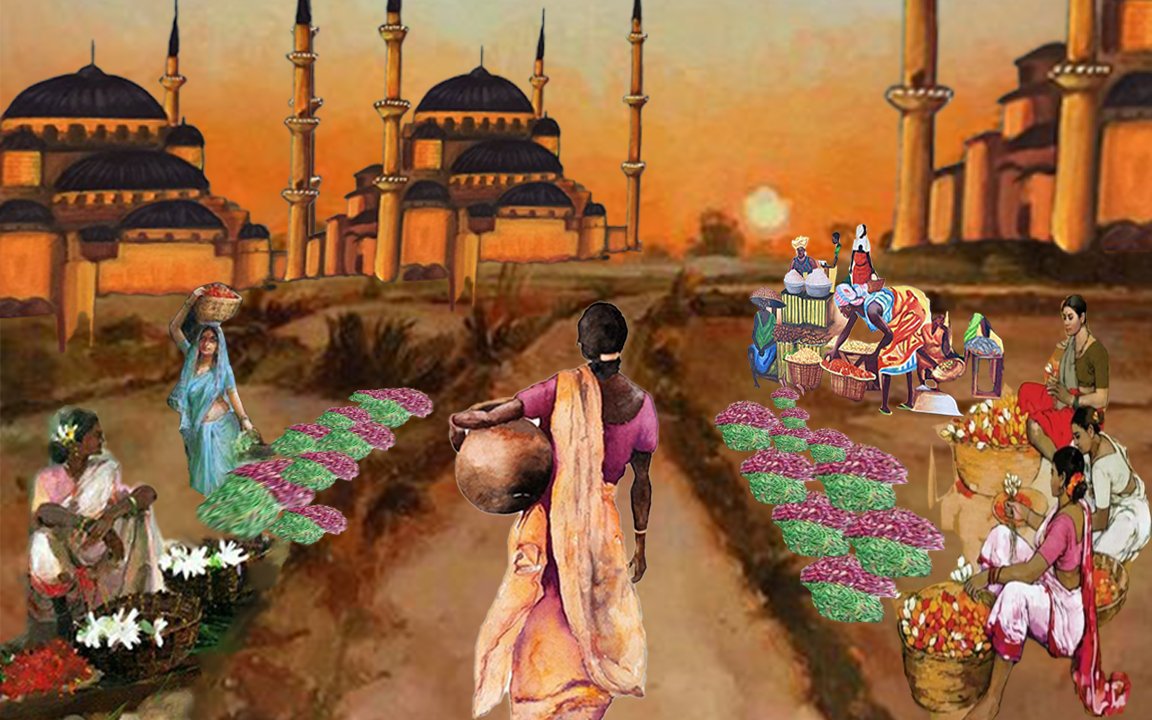





Emily Daiker
The Phenomena of Gems
The Cleveland Museum of Natural History's recent renovations strives to connect the community with the museum. With the reimagined space of Kirkland Hall, a blend of exhibit and event space will allow the community to engage with one another and the museum's rich collections. The exhibit will house the museum's gem collection and be organized by the radical movement of light through a gem, focusing on three effects produced by light; Schiller, Fire, and Fluorescence. The optical phenomena produced by the bending and dispersion of light will help create a playful environment for the display of precious gems and social interaction.




